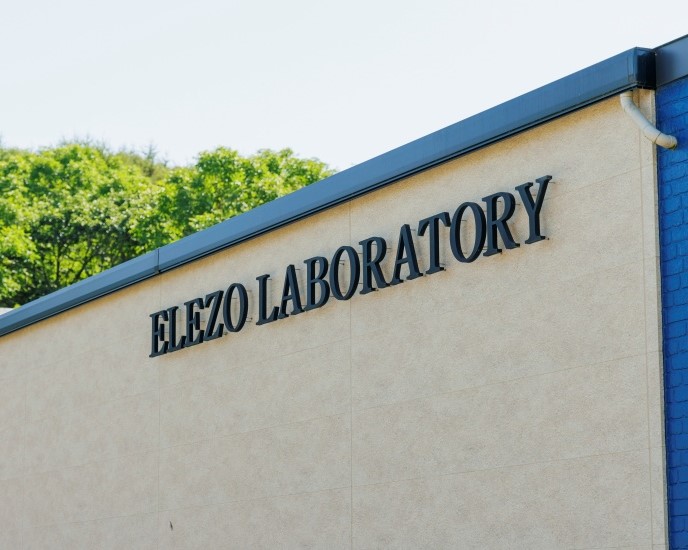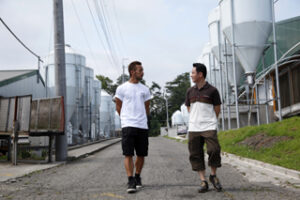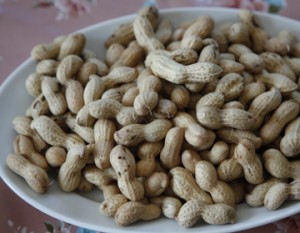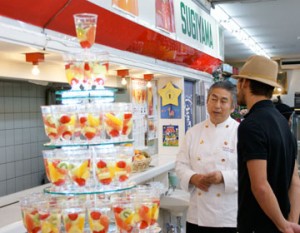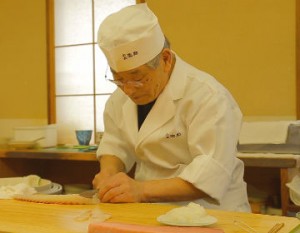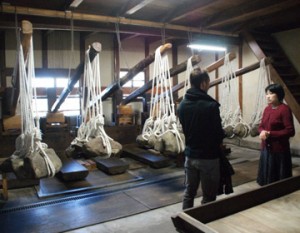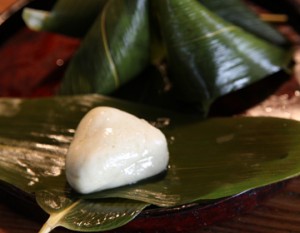While also being a chef, Shota Sasaki is the founder of ELEZO, a company that handles everything from hunting to production, maturing, processing, and sales as a hunter. What is the future of food as seen by a company that has a consistent stance toward game meat, nature, and life?
Aiming to be a “food pioneer” in the birthplace of Tokachi

The pioneering of the Tokachi region is said to have begun in earnest during the Meiji period (1868-1912). The first farmers settled in the Otsu area, located at the mouth of the Tokachi River, and the area has a history of development that began at the mouth of the river and continued upstream. Toyokoro, located at the mouth of the Tokachi River, which originates from Mt.
Toyokoro is a town of sea, mountains, and vast fields in the Tokachi Plain, where agriculture and fishing are flourishing. Many tourists come to Toyokoro for the spectacular view of “jewelry ice,” which is made of ice from the Tokachi River washed up on Otsu Beach at the mouth of the river and glistening in the sunlight. Rare wild birds and animals such as red-crowned cranes and white-tailed eagles live in this pristine natural environment.
ELEZO is a company established in Toyokoro, Japan, in 2005, and is engaged in the integrated production and management of game meat and other meat products, including pigs. ELEZO is a one-stop shop for hunting, raising, curing, processing, and product development, as well as sales and provision at restaurants.
Shota Sasaki first established the company in 2005 in Obihiro City, where he lives. After that, he built a laboratory in Otsu, Toyokoro, where his father’s family lived, and moved the company to a new location.
When I was a child, I used to visit Toyokoro as my father’s family home. When the town was pioneered, there was a movie theater and a racetrack. I used to feel the bustle of people in the midst of nature, but it has become completely desolate…. It was the birthplace of Tokachi development, and I wanted to “pioneer” it again.
There is another reason why Mr. Sasaki chose Toyokoro and especially Otsu, which is close to the sea. Nutrient-rich grass with minerals from the sea grows along the coast. Animals that graze on grass full of nutrients are more fertile than those raised in other areas. Whether it’s pigs or chickens, it brings out the potential of the animals.
A new encounter that overturns preconceived notions of “game meat”

Until high school, Sasaki had aspirations of becoming a professional ice hockey player, but since his family was in the restaurant business, he helped out at the restaurant while still in high school and gradually developed an interest in cooking while experiencing the difficulties of the business firsthand.
Thanks to my grandmother and mother’s restaurant, ‘Ele,’ it is loved by everyone in Obihiro. That is why I felt the need to keep it going, even if I or my siblings had to follow in their footsteps.”
So, after graduating from high school, he decided to become a chef and entered a culinary school in Gunma Prefecture. After graduation, he worked at the Hoshino Resort, and on his days off, he visited the French restaurant “Bistrot Passion (now called Provence)” in Karuizawa to learn from the chef. After two years of further honing his culinary skills, he asked the chef to introduce him to the French restaurant “Bistrot de La CITÉ” in Shibuya, Tokyo, which was established in 1973 and offers authentic and warm dishes with a bistro-like atmosphere, unlike restaurants.
After training at the famous restaurant, Sasaki returned to his family home to help his mother, who had taken over the restaurant from his grandmother, as a chef. I want to do something that can only be done here in Tokachi Obihiro,” he thought, ”rather than just taking over the family business.
He was still searching for the answer to this question, when the topic of “game meat” came up with one of his regular customers.

When I told him that I had handled a variety of wild meat, including deer, during my training in Tokyo, he said, ‘You don’t have a whole deer intact,’ and ‘You’ve probably never removed the bones or skin, so I’ll bring it to you next time. The next day, he brought me a deer he had just killed, and I learned that the customer was actually a hunter.
While studying as a chef at a famous restaurant, Sasaki also ate a variety of delicious foods as part of his studies. Of course, he had also eaten gibier, but he said he had never found it tasty. The shock he felt when he experienced the process of skinning, boning, and butchering a deer that was placed in front of him was a big one. He was even more surprised by the taste of the deer meat he tasted a few days after disassembly. The taste overturned his previous concept of “game meat”.
I sent the local deer to the owner and chef of the restaurant where I was training and to everyone who had helped me,” he said. They were surprised at how much better than they had imagined it would taste. The chefs asked me if I could help them to obtain game meat of stable quality, because it is not raised like cattle or pigs, and the taste and aroma vary depending on the growing environment, season, feed, sex, age, and method of capture.
However, the goal was not to become a “company specializing in game meat.
Game meat is a very deep and difficult subject. I really want to understand the essence of gibier. It is not that I want to become a gibier expert, but rather that I want to clarify the essence of gibier. I am a chef by nature, but I don’t think the answer lies in the kitchen, the restaurant, or the customer. You can never get the answer just by confronting the meat in the kitchen. The answer is in nature. You have to start using the senses that you can only enjoy in nature.”
Sasaki has long been concerned about the negative impression that has been spread about the meat business. Everyone eats meat and enjoys its bounty, but there is a lack of understanding and appreciation for the industry. He came to realize that the people working in the meat industry are not being rewarded, and he thought that if he could take a total role in the “food” business, from hunting, to rearing, aging, distribution, processing, and cooking, he could change people’s awareness of the industry. A kind of sense of mission was born in me.
Became a hunter himself and obtained a license to operate a slaughterhouse.

When serving deer or other wild game, the meat must be purchased from a facility licensed as a slaughterhouse. The meat must be dismantled and processed at a slaughterhouse in accordance with prefectural regulations. In order to deliver legal and safe wild game to Bistrot de La CITÉ, Le Manoir D’HASTINGS, Shiratori, The Georgian Club, and four other restaurants run by the same chef, Mr. Sasaki himself quickly obtained a hunting license. He obtained approval from the public health department and set up the necessary structure, including a converted tenant as a processing facility. He also hired a dedicated hunter and has been working hard to build an innovative system for gibier meat distribution.
In addition, ELEZO has set a clear rule that the deer it hunts must be young, no older than three years old.
The life span of a deer is around 10 years. Most large deer are between 5 and 10 years old. The meat in Japan is usually sold by the kilo. The amount of time and effort required to process a deer does not vary depending on the size or age of the deer. Large deer that can yield a large amount of meat are more efficient. This has created a vicious cycle in which large deer meat is distributed to Tokyo and other areas, regardless of the quality of the meat. The deer I enjoyed eating was a two-year-old deer with tender meat. Now I understand why the deer I ate before did not taste good.”
He has also decided not to aim the gun at anything other than the neck or head to avoid damaging organs and noses. Shooting at the stomach area will damage the internal organs and harden the meat, leading to deterioration in quality. After hunting, the animals are not processed in the field, but rather are delivered to the laboratory within one hour.
Creation of Integrated Meat Laboratory

ELEZO’s Ezo venison has gained a good reputation, and the company’s popularity is concentrated on young, high-quality doe that are “clear and clean,” as Mr. Sasaki calls them. However, it is not always possible to get a young doe, and sometimes a male deer is brought in. Another issue was how to handle the less popular cuts of meat other than those in high demand, such as the loin and fillet.
We can’t just say, ‘I only want the loin,’ or ‘I only want this part,’ like in a regular restaurant,” he said, ”for better or for worse. That’s why our policy is to take responsibility for every piece of meat.
ELEZO has created a laboratory that “sublimates all of life”. The meat is then processed into fresh salami, terrine, ham, etc., and sold in the company’s charcuterie department. The most popular parts, which are in high demand, are cured and sold to restaurants. The quality of ELEZO’s meat has spread from mouth to mouth, and the company now has 400 restaurants nationwide and ships about 600-800 head of Ezo alone each year.
In addition, ELEZO is also focusing on raising birds and pigs in a natural style similar to game meat, based on the company’s desire since its establishment to “unveil game meat and then produce livestock and poultry that contain gibier.
For example, we raise pigs slowly for a year and a half instead of the usual six months, and graze them on a sloping hill from early on. We also practice stress-free flat-raising where chickens are released on the ground. We want to move away from an ecology that is adapted to the convenience of humans as table meat, to an environment where we can feel the background, emotions, and functions of animals that have lived in the wild, or animals that should live in the wild.
Passing on the aesthetics of meat, life and nature to the future

In October 2022, the auberge “ELEZO ESPRIT” will open. It will be a facility where visitors can enjoy ELEZO’s unique cuisine and space that focuses on the essence of life and nature, including the aesthetics of meat.
Mr. Sasaki says, “It is inefficient to handle the A to Z of food starting with the chef, from hunting and production to curing, processing, and sales. However, if we, who know the behaviors of a living creature from its ecosystem and the essentials of how to make a living creature, can further penetrate into the essence of the food, we can create the value we wish for the food itself, and this will lead to a great advantage.
We are preparing to realize the AtoZ model that we have developed over the past 19 years in other countries as well. The model itself, but ultimately we would like to create an academy to increase the value of the artisans.
In the future, Mr. Sasaki would like to raise cattle here, as well as Japanese and French ducks and pheasants. His passion for food culture and inquisitiveness will continue to accelerate in the future.



